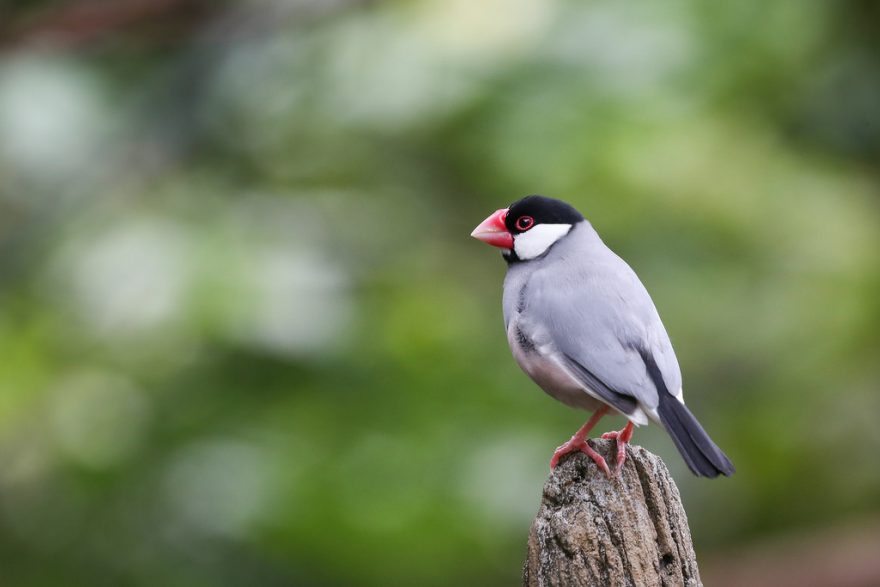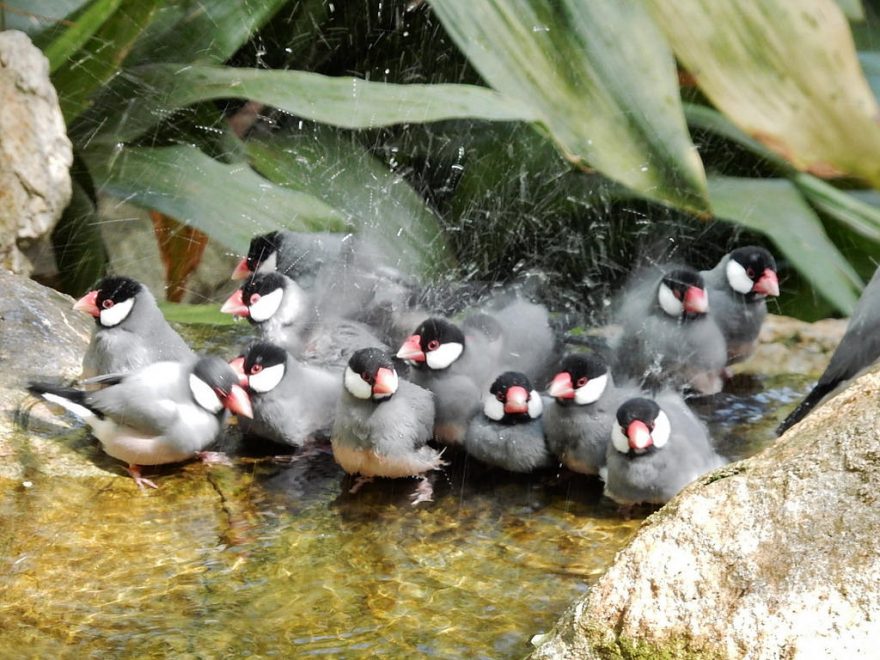The Java finch (also known as the Java sparrow) is a large-sized finch native to Indonesia. The species has been kept in Asia for hundreds of years, where they’re kept in small cages and bred as companion birds. Java finches have become popular in aviculture throughout the world, thanks to their suitability for beginner bird breeders. It is illegal to keep Java finches in the US state of California due to bio-security concerns.

Housing & Compatibility
Java finches can be housed as single pairs, a colony, or as part of a mixed collection. When more than one pair is housed in a single aviary, it’s important to provide adequate distance between nesting sites to reduce aggression.
Java finches are a large stocky finch and can be assertive to smaller finches. They should be housed with other larger, more resilient finches. Small doves and parrots in the Neophema genus make good aviary mates. The best way to manage their aggression is to provide a large, sparsely-populated aviary with plenty of hiding places.
Java finches will be destructive to foliage in a planted aviary, so a careful balance between the number of birds and the growth rate of plants must be achieved.
Diet & Feeding
A quality seed mix including canary seed, various millets and panicum forms the basis of the Java finch’s diet. Seed lacks many essential vitamins and minerals which must be compensated for by introducing other foods. Sprouted seed increases the nutritional value of seed and is a cheap way to improve your birds health. Freshly grown green seed heads should also be offered frequently.
Leafy greens such as kale, bok choy, endive and silverbeet are in important part of the Java finch’s diet. Spinach can also be given, but only sparingly as it can contribute to calcium deficiency.
Live food is not strictly necessary, but may be consumed during the breeding season. Small mealworms are most commonly offered and are a good source of protein.
Do not feed anything from the list of forbidden foods.

Breeding
Java finches breed in the milder spring and autumn months. They will construct a large nest in a shrub, dry brush or a commercial nesting box (budgie-sized) using grass and feathers.
A hen will produce 2 to 3 clutches per year, after which nests should be removed to prevent over-breeding. Clutches consist of between 4 and 7 eggs – with good hatch rates. Both parents will incubate the eggs for approximately two weeks. Once hatched, young birds will fledge at fours weeks of age and be fully independent about four weeks later.
Nest inspections are reasonably well tolerated. Furthermore, it is generally safe to leave the young birds with their parents after they become independent – but only in an aviary situation.
Sexing
Java finches are very difficult to visually sex. Only males will sing, so separation and observation can be used to determine gender.
There are subtle differences in the beak shape between males and females. Males have slightly wider beaks and have a more pronounced bump at the beak’s base.
Mutations
Many color mutations have been established. Most of the mutations affect the intensity of the dark grey body feathers, resulting in a lighter appearance. Common mutations include white, cream, silver, and pastel.
Health
A strict worming and parasite control regime is essential to ensure the long-term health of any finch collection. A healthy Java finch should live for 7 to 9 years.
What the heck is a “bio-security concern”?